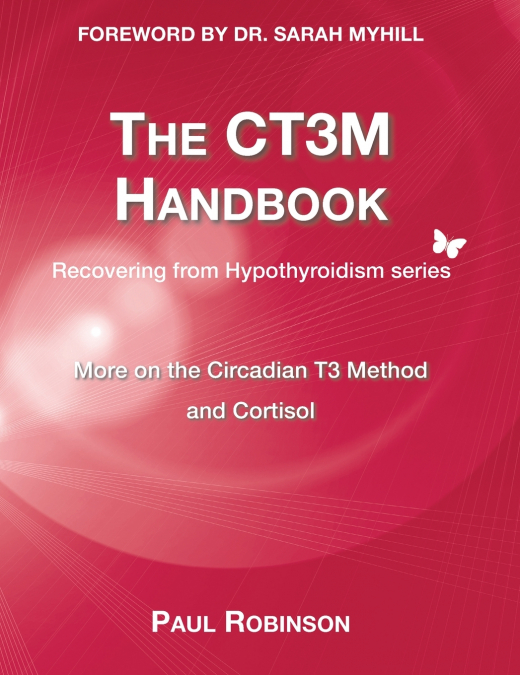
 Librería Perelló (Valencia)
Librería Perelló (Valencia)
 Librería Aciertas (Toledo)
Librería Aciertas (Toledo)
 Librería Elías (Asturias)
Librería Elías (Asturias)
 Donde los libros
Donde los libros
 El AlmaZen del Alquimista (Sevilla)
El AlmaZen del Alquimista (Sevilla)
 Librería Kolima (Madrid)
Librería Kolima (Madrid)
 Librería Proteo (Málaga)
Librería Proteo (Málaga)
The CT3M Handbook describes how the author recovered from severe adrenal hormone issues by developing an innovative and simple approach called the Circadian T3 Method (CT3M), which helps to produce cortisol as nature intended.Thyroid patients often have symptoms associated with low cortisol (hypocortisolism). These can include: severe fatigue; low blood sugar; aches/pains; dizziness; poor response to thyroid hormones; anxiety; fluctuating body temperature; digestive upsets; allergies; nausea; low blood pressure - to name but a few. Thyroid hormones will not work correctly if the adrenal glands do not produce an adequate level of cortisol. Consequently, patients with hypocortisolism often continue to have symptoms, even if thyroid hormone levels have been corrected. Symptoms of low cortisol appear to be at epidemic levels among thyroid patients.The author explains why hypocortisolism can often be present when a thyroid patient is taking thyroid medication. The Circadian T3 Method (CT3M) is an approach to using T3 or natural desiccated thyroid medications that mimics the natural rhythm of our thyroid hormones, and helps to improve adrenal hormone levels.CT3M has been used by thousands of thyroid patients since the author first introduced it in his first book ’Recovering with T3’. CT3M is providing thyroid patients, and their doctors, with a simple, natural way to correct hypocortisolism.The book explains CT3M in depth. It provides thyroid patients, and their doctors, with the wealth of information that is needed when using CT3M in order to get truly well.The book has a foreword by Dr. Sarah Myhill, who says this about it: 'It gives every thyroid patient the clues, the rules and most importantly the confidence to identify underlying impediments to recovering their health, and adjust their dosage of thyroid hormones to an individually tailored regime. I would recommend this book to any patient who has failed to respond to standard mono-therapy with thyroxine.' The CT3M Handbook is a must-read for all thyroid patients struggling with hypocortisolism. It is also essential reading for doctors who have patients like these in their care.The book was updated in 2018 to incorporate recent thyroid research study findings. This book along with the author’s other books about hypothyroidism, now form the Recovering from Hypothyroidism series.